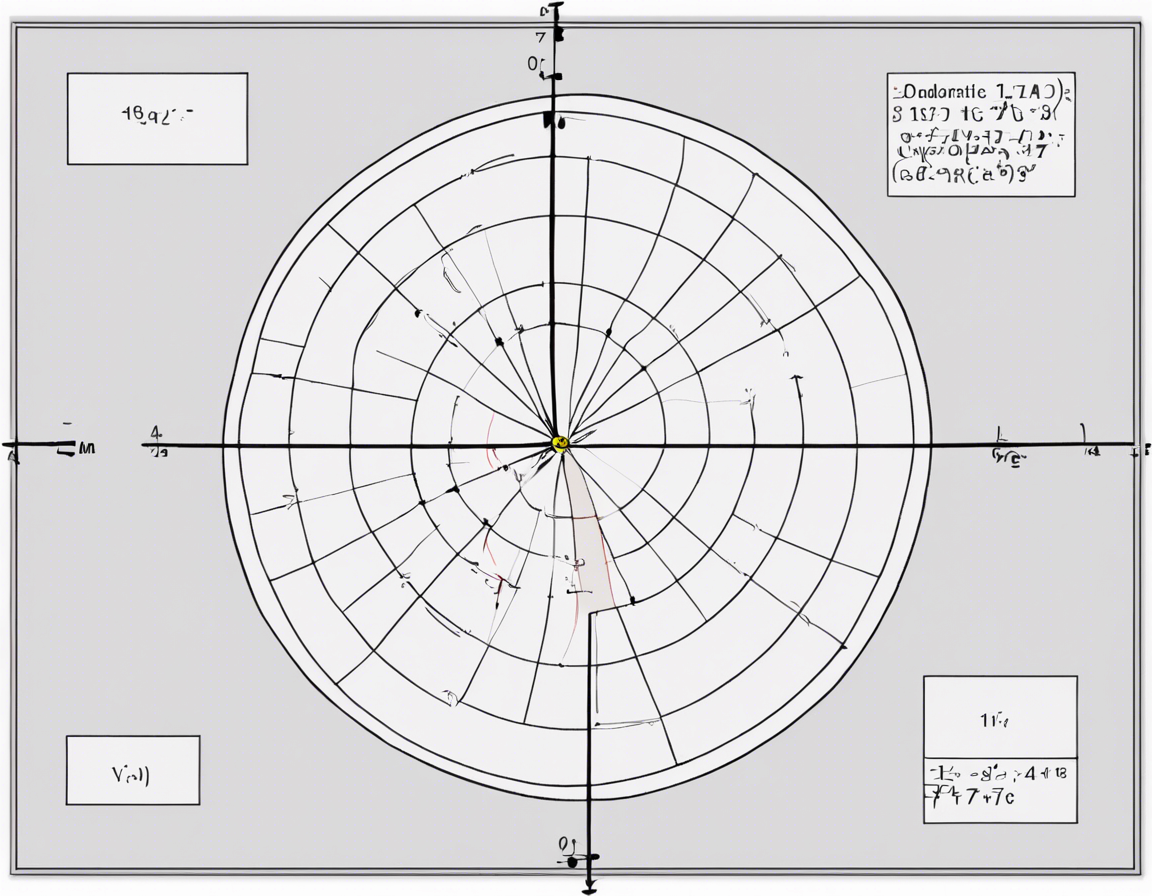Calculating the area of a circle's quadrant is a fundamental geometric concept that involves some key principles of circle geometry. In this blog post
Calculating the area of a circle’s quadrant is a fundamental geometric concept that involves some key principles of circle geometry. In this blog post, we will delve into the details of how to find the area of a circle’s quadrant step by step. We will also explore the significance of this calculation and provide real-world examples where understanding this concept can be useful.
Understanding the Basics of Circle Geometry
Before we dive into how to find the area of a circle’s quadrant, let’s briefly revisit some basic concepts related to circle geometry.
-
Circle: A circle is a closed shape where all points on the boundary are equidistant from the center. The distance from the center of the circle to any point on the boundary is called the radius (r).
-
Quadrant: A quadrant is a quarter of a circle. When a circle is divided into four equal parts, each part is referred to as a quadrant.
Calculating the Area of a Circle’s Quadrant
To find the area of a circle’s quadrant, we can follow a simple formula based on the area of a full circle.
Step 1: Calculate the Area of the Full Circle
The formula to calculate the area of a circle is:
[ A = \pi r^2 ]
where:
– A is the area of the circle,
– π (pi) is a constant approximately equal to 3.14159, and
– r is the radius of the circle.
Step 2: Find the Area of the Quadrant
Since a quadrant is one-fourth of a full circle, we can find the area of a quadrant by dividing the area of the full circle by 4:
[ \text{Area of Quadrant} = \frac{1}{4} \times \pi r^2 ]
So, to find the area of a circle’s quadrant, we can simply calculate one-fourth of the total area of the circle.
Real-World Applications
Understanding how to find the area of a circle’s quadrant has practical implications in various fields. Some real-world applications include:
-
Architecture: Architects use circle geometry concepts to design curved structures and spaces within buildings.
-
Engineering: Engineers rely on geometric calculations, including circle quadrant areas, for designing mechanical components and understanding trajectories.
-
Art and Design: Artists and designers may use circle geometry principles for creating aesthetically pleasing compositions and patterns.
-
Science: Scientists often encounter circular shapes in nature and laboratory settings, where knowledge of circle geometry is essential for accurate measurements and analyses.
FAQs (Frequently Asked Questions)
Q1: How is a quadrant different from a sector in a circle?
A1: A quadrant is one-fourth of a circle and is formed by two perpendicular radii. A sector, on the other hand, is a portion of a circle enclosed by two radii and the corresponding arc.
Q2: Can I find the perimeter of a circle’s quadrant using the same formula for area?
A2: No, the formula for finding the perimeter of a quadrant is different and involves adding the length of the curved boundary and two radii.
Q3: In what units should the radius be if I want the area in square units?
A3: The radius should be in the same units as those used for measuring area (e.g., square meters, square centimeters) to ensure consistency in the calculation.
Q4: How can knowledge of circle quadrants be helpful in trigonometry?
A4: Understanding circle quadrants is foundational to trigonometry, especially in determining signs of trigonometric functions based on the coordinates of a point in different quadrants.
Q5: Are there any shortcuts or tricks to remember the formulas for circle quadrant calculations?
A5: One helpful mnemonic is the phrase “All Silver Teacups Shine Brightly,” where the first letter of each word corresponds to the formula for area of a circle (A = πr^2) and for a quadrant (A = ¼πr^2).
By mastering the concept of finding the area of a circle’s quadrant, you not only enhance your problem-solving skills in geometry but also gain a valuable tool for practical applications across various disciplines. Whether you are a student, a professional, or simply a curious mind, understanding and applying circle geometry principles can open up a world of possibilities in your academic and professional endeavors.


COMMENTS